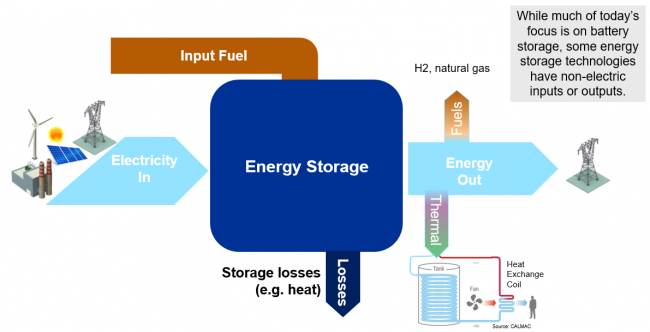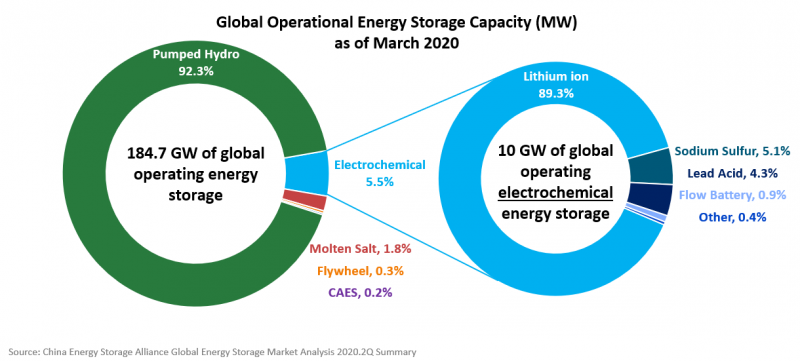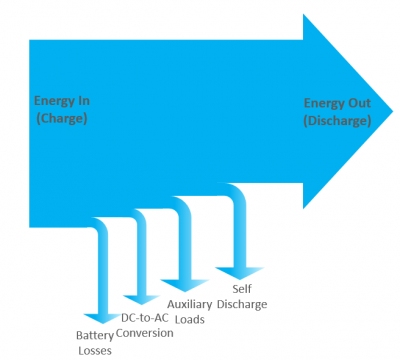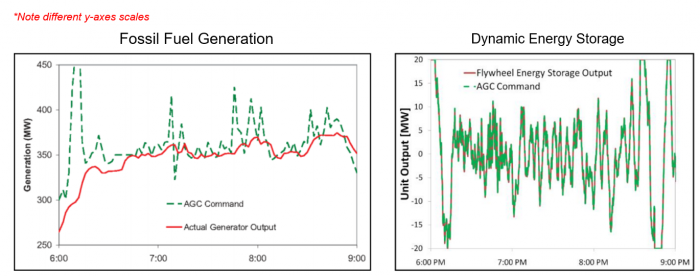Difference between revisions of "Energy Storage 101/Technologies"
| Line 17: | Line 17: | ||
Globally over 95% of installed storage is pumped hydropower, but battery storage is quickly growing. Approximately 98% of new ‘advanced’ storage projects are [[Lithium Ion Batteries|lithium ion battery]] systems. | Globally over 95% of installed storage is pumped hydropower, but battery storage is quickly growing. Approximately 98% of new ‘advanced’ storage projects are [[Lithium Ion Batteries|lithium ion battery]] systems. | ||
[[File:Global_ES_by_technology.PNG|none|thumb|800px|A breakdown of global energy storage installations by technology]] | |||
{{Special:IframePage|plotly|path=Operational_Install_Breakdown.html}}--> | <!--{{Special:IframePage|plotly|path=Operational_Install_Breakdown.html}}--> | ||
==Technical Characteristics of Energy Storage== | ==Technical Characteristics of Energy Storage== | ||
Revision as of 18:32, 5 November 2020
Defining Energy Storage
People often think of grid energy storage as electricity in / electricity out with some energy loss in between due to inefficiencies. A more inclusive "energy storage" definition should include technological nuances like supplemental energy sources (e.g. input fuels or heat injection). One must also consider that energy storage systems can output non-electrical energy in the form of heat, cooling, or fuel sources (e.g. hydrogen).
Big Picture of Energy Storage Technology Deployment
Globally over 95% of installed storage is pumped hydropower, but battery storage is quickly growing. Approximately 98% of new ‘advanced’ storage projects are lithium ion battery systems.
Technical Characteristics of Energy Storage
The specific project use case(s) will dictate the desirable system attributes. Understanding these attributes and the trade-offs between them will help with the selection of a specific technology. For an exhaustive list of considerations, refer to the ESIC Technical Specification Template.
Power and Energy
Some of the most fundamental attributes to understand in energy storage are power (measured in Watts) and energy (measured in Watt-Hours).
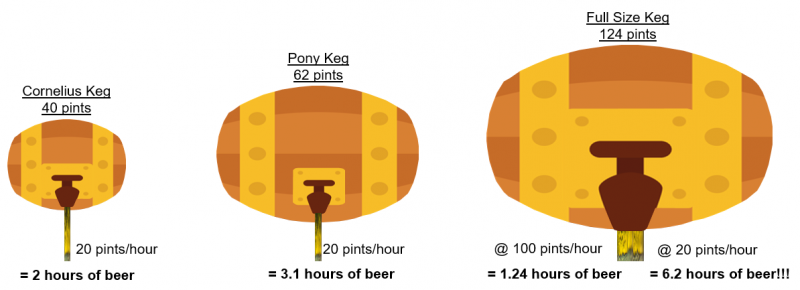
Useful Life
The useful life of an energy storage system is a tricky concept to define generally, but it typically refers to how long a system is able to operate before degradation prevents the system from performing its objective safely and reliably. Different technologies will have drastically different degradation time frames and mechanisms, but most degradation effects on useful life can be described by cycle life of calendar life
Cycle Life: Number of times the energy reservoir can be charged and discharged before degradation beyond application requirement. Depth of cycle impacts life expectancy.
Calendar Life: Years until the storage system operates before degradation beyond application requirement. Independent of cycle life.
Footprint
A system's footprint describes the amount of space that a technology, and its associated auxiliary components, will occupy. It is affected by many design characteristics including power density, energy density, and packaging choice.
| Developer, Site | Size | Footprint | Notes |
|---|---|---|---|
| Tesla, Ontario | 20MW, 80MWh | ~62,000 sq ft | Pre-packaged BESS enclosures |
| AltaGas/GreenSmith, Pomona | 20MW, 80MWh | 10,800 sq ft (Battery building) | Located at existing gas plant facility |
| AES, Escondidio | 30MW, 120MWh | 1 acre (43,560 sq ft) | 24 x 640 sq ft trailers |
Efficiency
Ratio of the delivered discharge energy to the delivered charge energy, including facility parasitic loads.
Response Time and Ramp Rate
Fast acting energy storage systems may perform dynamic grid services (like frequency regulation) better than conventional alternatives.
Safety
Could use some good content for this section, the slide we have isnt very good
Survey of Technologies
| Storage Technology | Technology Image | How it Works | Variations | Efficiency Range | Cycle Life Range | Maturity Level | Pros | Cons | Applications |
|---|---|---|---|---|---|---|---|---|---|
| Compressed Air Energy Storage (CAES) | 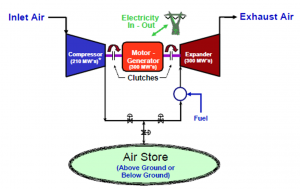 | Air is compressed (charging), stored, and expanded (discharging). | 40-55% | 30 years |
|
| Bulk, long-duration services | ||
| Flow Batteries | 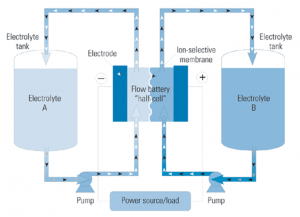 | Liquid anode (anolyte) and cathode (catholyte). Electrolytes flow through reaction cell and charge transfer occurs at a membrane. Vanadium-based chemistry is most mature, other chemistries being developed. | Vanadium Redox
Zinc Bromine Coupled iron-chrome Zinc/Chlorine Organic | 50-75% | 20 years, >100,000 cycles (claimed) |
|
| Energy shifting for renewable integration, T&D deferral, potential for longer duration | |
| Flywheel Energy Storage | 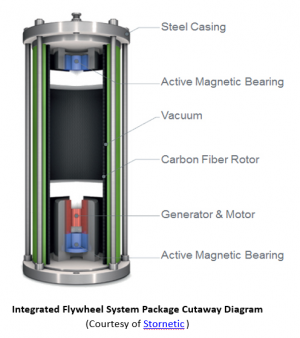 | Rotating mass stores rotational kinetic energy. | 85-90% | >100,000 cycles |
|
| Power quality, frequency regulation, wind generation stabilization; high energy flywheels are being developed for longer duration applications. | ||
| Lithium Ion Batteries | 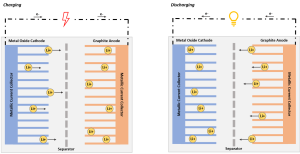 | Shuttle lithium ions (Li+) between cathode (+) and anode (-). Fully charged when Lithium ions are fully intercalated in the anode. | Lithium Iron Phosphate (LFP),
Nickel Manganese Cobalt (NMC), Nickel Cobalt Aluminum Oxide (NCA), Lithium Titanate Oxide (LTO) | 80-92% | 3,000 - 10,000 cycles 10 - 20 years |
|
| Diverse applications from minutes to hours duration and from small scale residential to transmission connected. | |
| Pumped Hydroelectric Energy Storage | 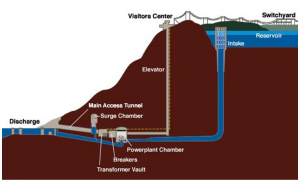 | Gravitational potential energy ↔ kinetic energy ↔ electricity Water is pumped up hill with excess electrical energy which is stored as gravitational potential energy. When energy is needed, water flows down through the generator to produce electricity. | 70-85% | 60-100 years1 |
|
| Bulk, long-duration services, power regulation and load following | ||
| Thermal Energy Storage - End Use | 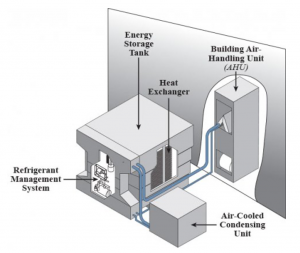 | Storing energy by heating or cooling a storage medium for end use in a thermal application. | Not applicable | 10 - 15 years |
|
|
| ||
| Thermal Energy Storage - Generation | 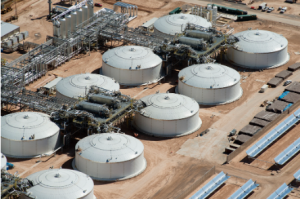 | Storing energy by heating or cooling a storage medium and converting to electricity. | 35-60% | 20 - 30 years |
|
|
|
Research and Resources at EPRI
Current Research Focus
- Long duration storage
- Non-lithium storage
- Lithium ion advancements
Resources and Engagement Opportunities
| Resource | Access Level |
|---|---|
| Webcast Recording on Energy Storage Technology | Publicly Available |
| Emerging Energy Storage Technology Testing and Demonstration Supplemental Project | Supplemental Funders |
| Energy Storage Technology Database | Program 94: Energy Storage and Distributed Generation or
Program 66: Advanced Generation and Bulk Energy Storage |
| Strategic Intelligence (SI) Articles | Program 94: Energy Storage and Distributed Generation |
| DER Forum: Technologies Discussion | Program 94: Energy Storage and Distributed Generation |
